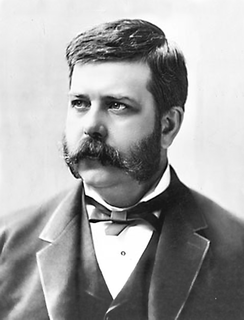 W
WGeorge Westinghouse Jr. was an American entrepreneur and engineer based in Pennsylvania who created the railway air brake and was a pioneer of the electrical industry, receiving his first patent at the age of 19. Westinghouse saw the potential of using alternating current for electric power distribution in the early 1880s and put all his resources into developing and marketing it. This put Westinghouse's business in direct competition with Thomas Edison, who marketed direct current for electric power distribution. In 1911 Westinghouse received the American Institute of Electrical Engineers's (AIEE) Edison Medal "For meritorious achievement in connection with the development of the alternating current system."
 W
WThe Westinghouse Electric Corporation was an American manufacturing company founded in 1886 by George Westinghouse. It was originally named "Westinghouse Electric & Manufacturing Company", and was renamed "Westinghouse Electric Corporation" in 1945. The company acquired the CBS television network in 1995, and was renamed as the first incarnation of "CBS Corporation", until being acquired by Viacom in 1999. That merger was completed on April 26, 2000.
 W
WThe second incarnation of Westinghouse Electric Corporation is a Delaware General Corporation Law organized subsidiary that was founded in 1998 by Westinghouse-CBS in managing the intellectual property assets relating to the Westinghouse trademarks produced from 1886 until 1996.
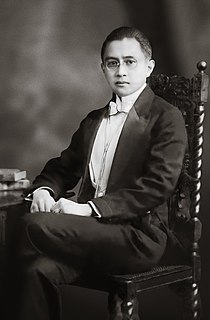 W
WDon Gabriel A. Daza, KGCR, KC*SS was the first Filipino electrical engineer and one of the charter members of the Boy Scouts of the Philippines (BSP). He co-founded the Philippine Long Distance Telephone Company (PLDT), Philippine Telegraph and Telephone Co. (PT&T), Philippine Electric Manufacturing Company (PEMCO), Phelps Dodge Philippines. He was the Supervising Engineer and Assistant General Manager of Visayan Electric Company (VECO) and led its expansion out of Cebu City. President and Chief Scout of the BSP in 1961-68. In 1945, President Osmeña appointed Daza to be a member of the Board of Directors of the Manila Railroad Company and the Philippine Charity Sweepstakes Office. In 1950, he was Vice-Chairman of the National Power Corporation and on the board of directors of the Manila Hotel Company. In 1951, Daza was appointed Appointed by President Quirino as a founding member of the Board of Directors of the National Shipyard and Steel Corporation in 1951. President and Director of the National Economic Protection Agency (NEPA) in 1956.
 W
WDeepstar 4000 was a U.S. Navy/civilian deep-submergence vehicle designed by Jacques Cousteau and built by Westinghouse. It was built in 1965 and retired in 1972. Some of the explorations of Deepstar 4000 were shown in the January 1971 edition of National Geographic. At the time of the article, Deepstar 4000 had already completed more than 200 dives in the Atlantic, Pacific, and Caribbean. This number of completed dives appears to be understated. In R. Frank Busby's book Manned Submersibles, it is stated on page 53 that the Deepstar 4000 "conducted some 500 dives from June 1966 through June 1968". Deepstar 4000 was designed to take a crew of up to three to a depth of 4,000 feet (1,200 m), hence the name Deepstar 4000.
 W
WThe New England Westinghouse Company is a former division of Westinghouse Electric. It was founded in 1915 in East Springfield, Massachusetts. Its primary purpose was to fulfill a contract to produce 1.8 million Mosin–Nagant rifles for Czar Nicholas II of Russia during World War I. In order to produce the rifles, they purchased the J Stevens Arms & Tool Company in Chicopee Falls, Massachusetts on 1 July 1916 and acquired all its holdings which included firearms and tool manufacturing facilities, and the Stevens-Duryea automobile factory. They sold the tool manufacturing portion of Stevens and shut down production of Stevens-Duryea automobiles and civilian firearms. The remaining Stevens firearms facility was renamed the J Stevens Arms Company and its machinery was retooled to meet the Mosin–Nagant contract. After some 770,000 rifles had been produced, the Czar was deposed in March 1917. Nonetheless, the Russian Embassy in Washington, D.C. still under the direction of Provisional Government Ambassador Boris Bakhmeteff, made financial arrangements with the U.S. State Department and the U.S. Treasury Department on 20 December 1917 for National City Bank to make payments of $325,000 to the Remington Company for rifles and $2,075,000 to J.P. Morgan in connection with a Westinghouse arms contract.
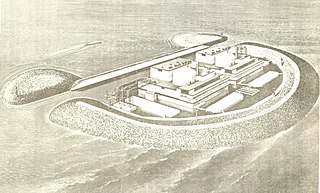 W
WOffshore Power Systems (OPS) was a 1970 joint venture between Westinghouse Electric Company, which constructed nuclear generating plants, and Newport News Shipbuilding and Drydock, which had recently merged with Tenneco, to create floating nuclear power plants at Jacksonville, Florida.
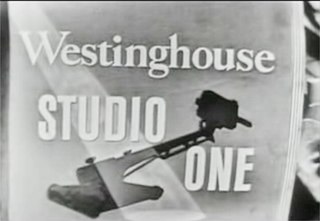 W
WStudio One is an American anthology drama television series that was adapted to from a radio series. It was created in 1947 by Canadian director Fletcher Markle, who came to CBS from the CBC. It premiered on November 7, 1948 and ended on September 29, 1958, with a total of 467 episodes over the course of 10 seasons.
 W
WWabtec Corporation is an American company formed by the merger of the Westinghouse Air Brake Company (WABCO) and MotivePower Industries Corporation in 1999. It is headquartered in Pittsburgh, Pennsylvania.
 W
W"We Can Do It!" is an American World War II wartime poster produced by J. Howard Miller in 1943 for Westinghouse Electric as an inspirational image to boost female worker morale.
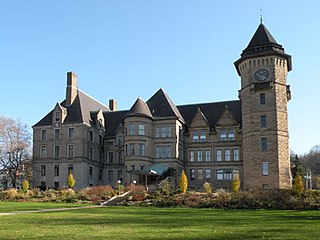 W
WThe Westinghouse Air Brake Company was founded on September 28, 1869 by George Westinghouse in Pittsburgh, Pennsylvania. Earlier in the year he had invented the railway air brake in New York state.
 W
WThe Westinghouse Brake & Signal Company Ltd was a manufacturer of railroad signs. Founded by George Westinghouse, it was registered as "Westinghouse Brake Company" in 1881. The company reorganised in 1920, associating with Evans O'Donnell, and Saxby and Farmer which merged to form the "Westinghouse Brake & Saxby Signal Company". The 'Saxby' would be dropped from their title in 1935.
 W
WThe Westinghouse Broadcasting Company, also known as Group W, was the broadcasting division of Westinghouse Electric Corporation. It owned several radio and television stations across the United States and distributed television shows for syndication.
 W
WWestinghouse Electronics LLC is a Chinese-owned American company that manufactures LCD televisions located in Diamond Bar, California.
 W
WThe Rolls-Royce RB.93 Soar, also given the Ministry of Supply designation RSr., was a small, expendable British axial-flow turbojet intended for cruise missile use and built by Rolls-Royce Limited in the 1950s.
 W
WThe Westinghouse Memorial is a bronze monument located in the U.S. city of Pittsburgh, Pennsylvania. It commemorates George Westinghouse, an engineer and inventor of the railway air brake. The memorial is located at the entrance to the Steven Faloon trail, a part of Schenley Park. The architects for the monument and the surrounding area were Henry Hornbostel and Eric Fisher Wood. Daniel Chester French was the sculptor for the statue and the main panel, and Paul Fjelde designed the side panels.
 W
WThe Regeneron Science Talent Search, known for its first 57 years as the Westinghouse Science Talent Search, and then as the Intel Science Talent Search from 1998 through 2016, is a research-based science competition in the United States for high school seniors. It has been referred to as "the nation's oldest and most prestigious" science competition. In his speech at the dinner honoring the 1991 Winners, President George H. W. Bush called the competition the "Super Bowl of science."
 W
WThe Westinghouse Sign was the first computer-controlled sign in the United States. Located in Pittsburgh, Pennsylvania, the large animated display advertised the Westinghouse Electric Company, and was best known for the seemingly endless number of combinations in which its individual elements could be illuminated. The sign was removed in 1998 when the building on which it was mounted was demolished to make way for the construction of PNC Park.
 W
WThe Westinghouse Time Capsules are two time capsules prepared by the Westinghouse Electric & Manufacturing Company. One was made in 1939 and the other in 1965. They are filled with contemporary articles used in the twentieth century way of life in the United States. The items are intended for people of the 7th millennium to receive for historical significance.
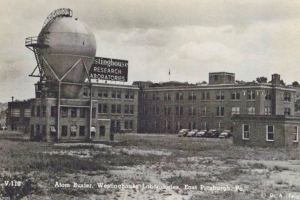 W
W